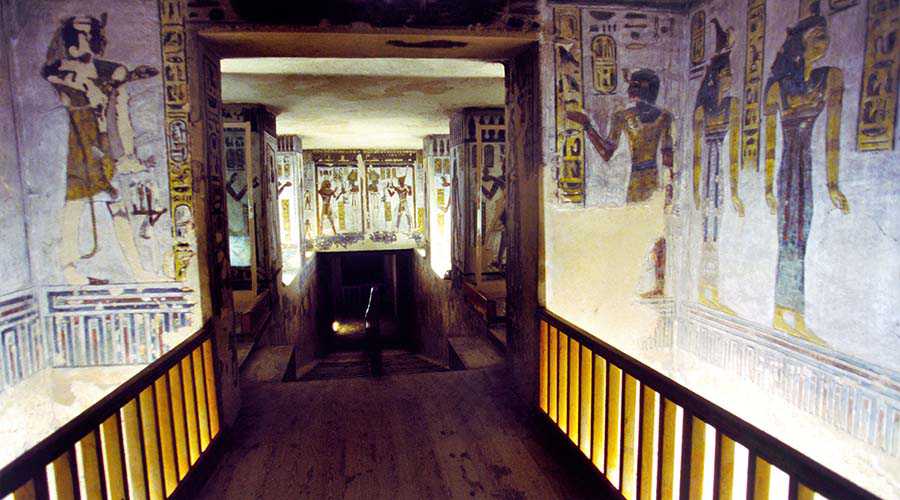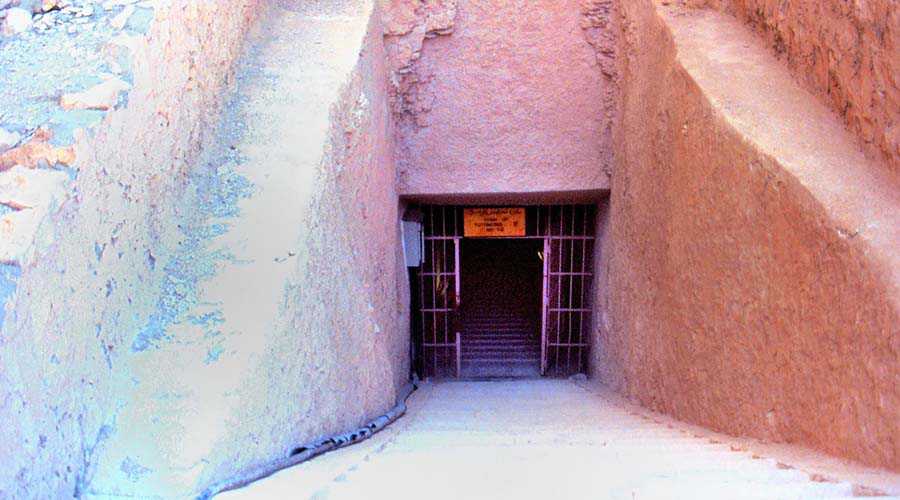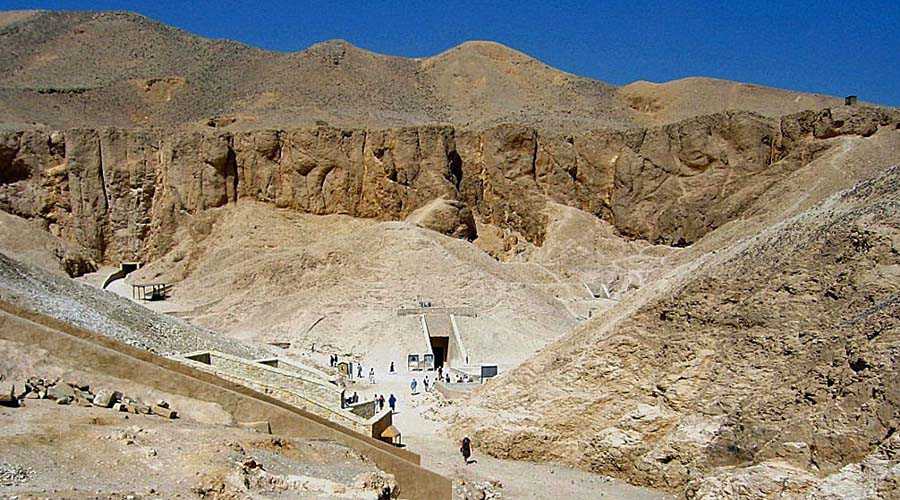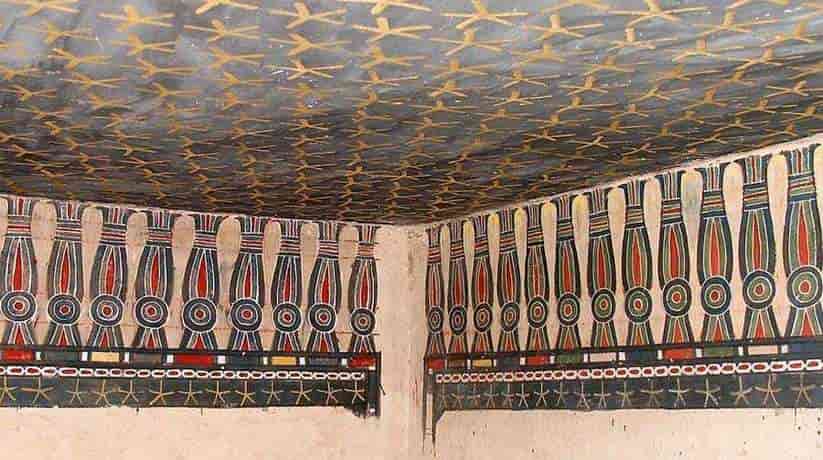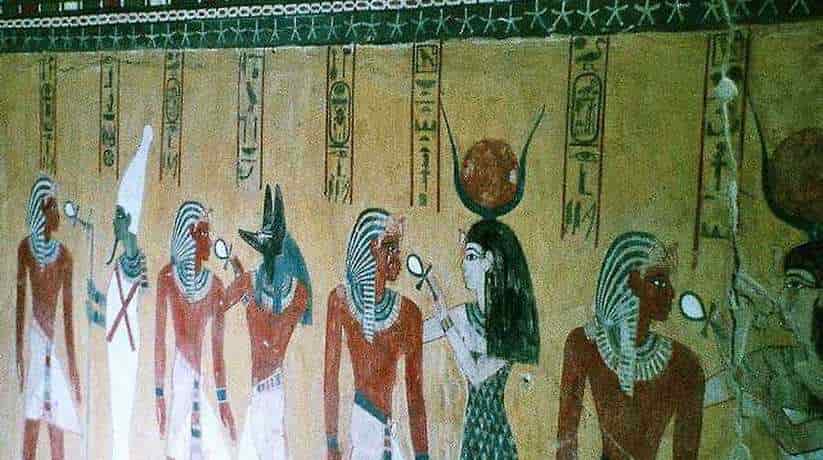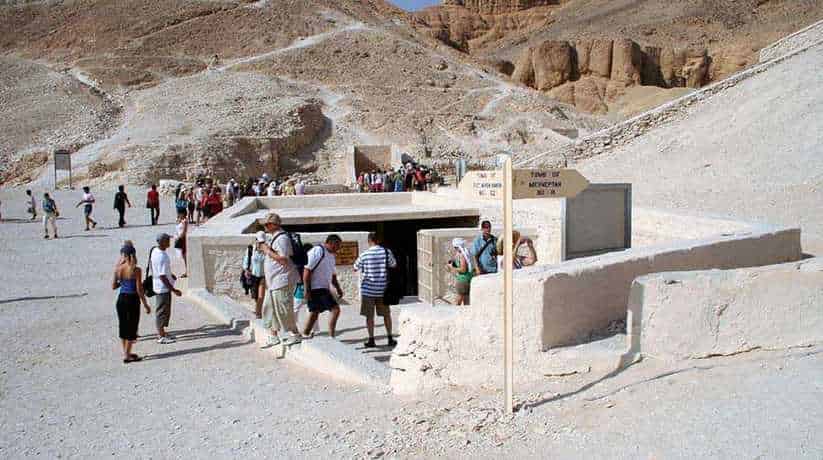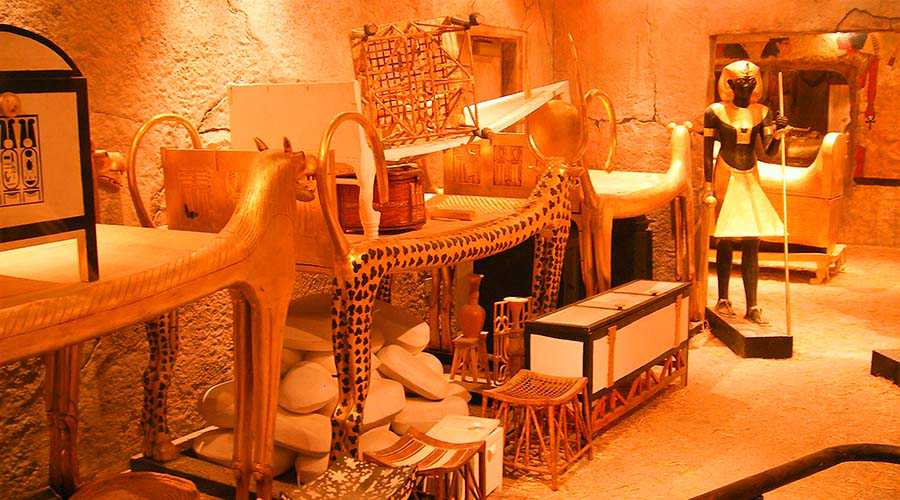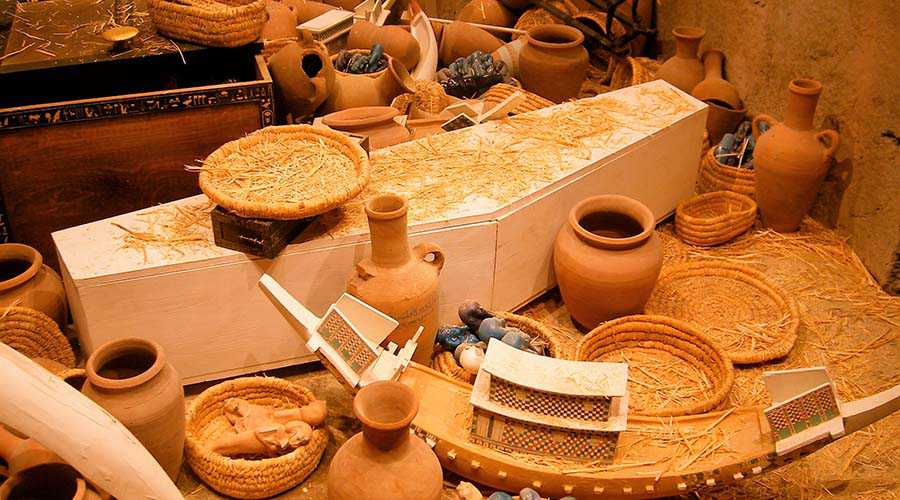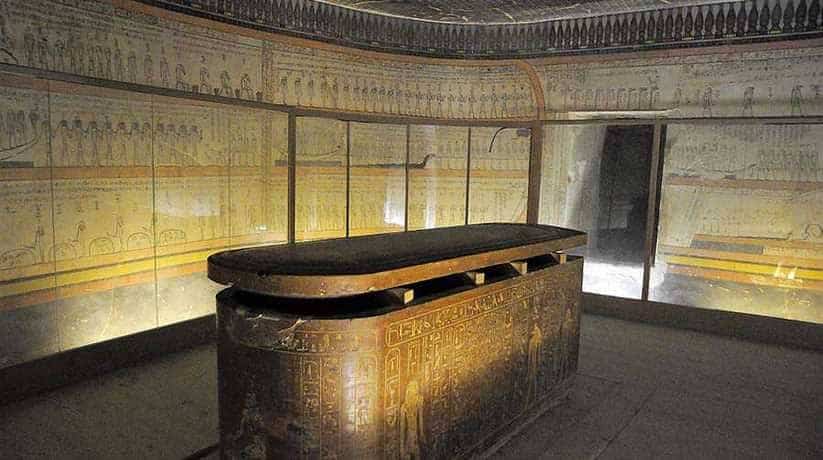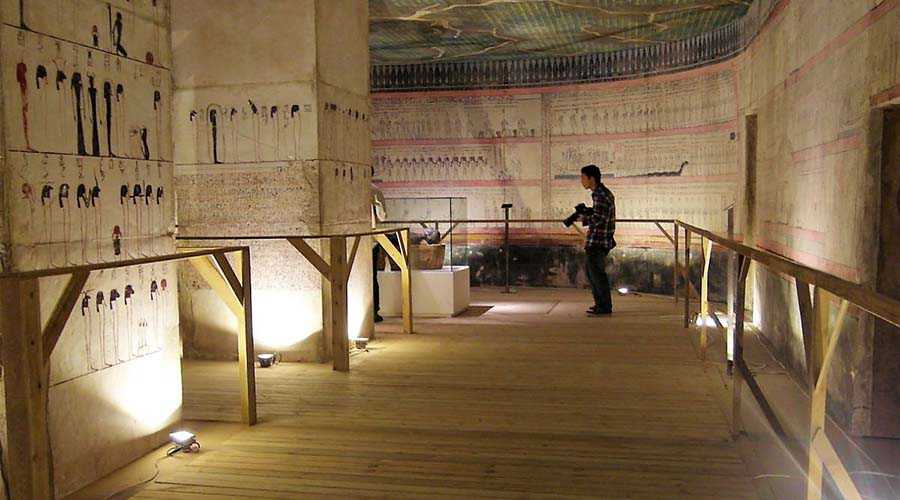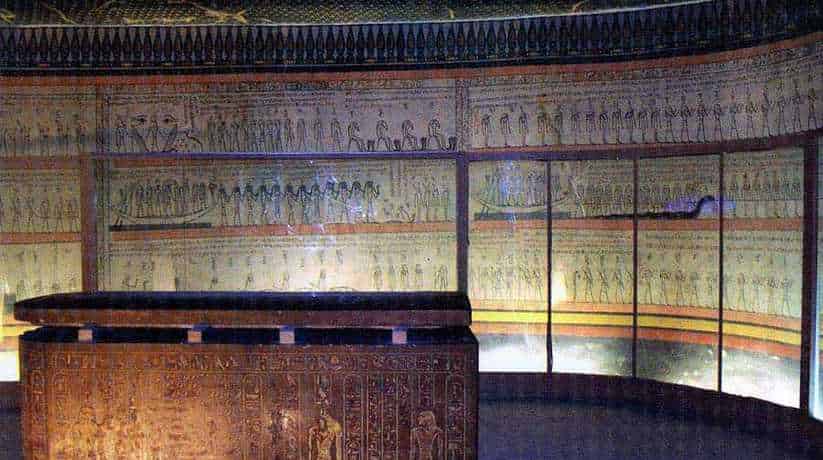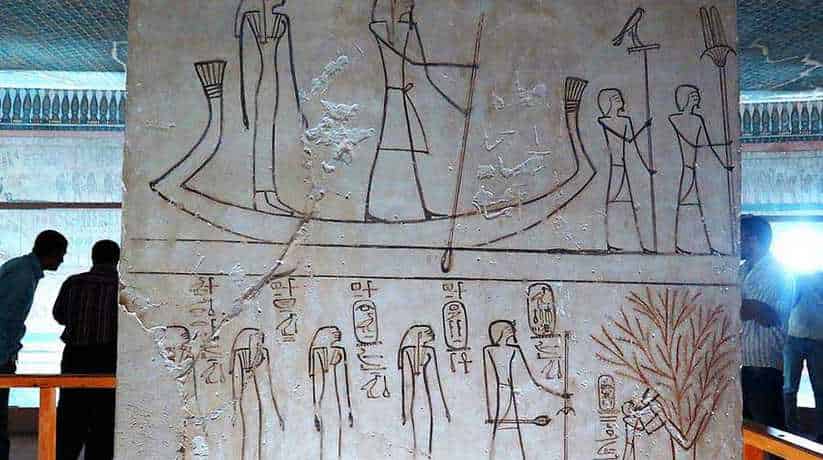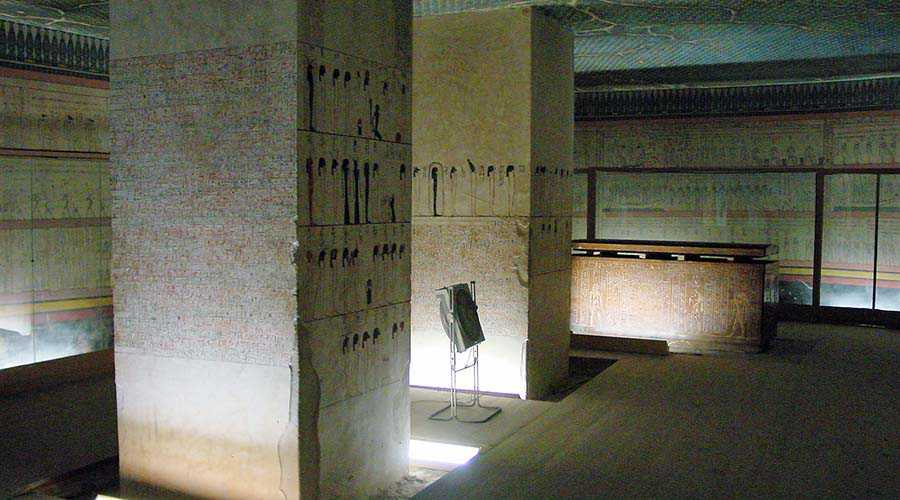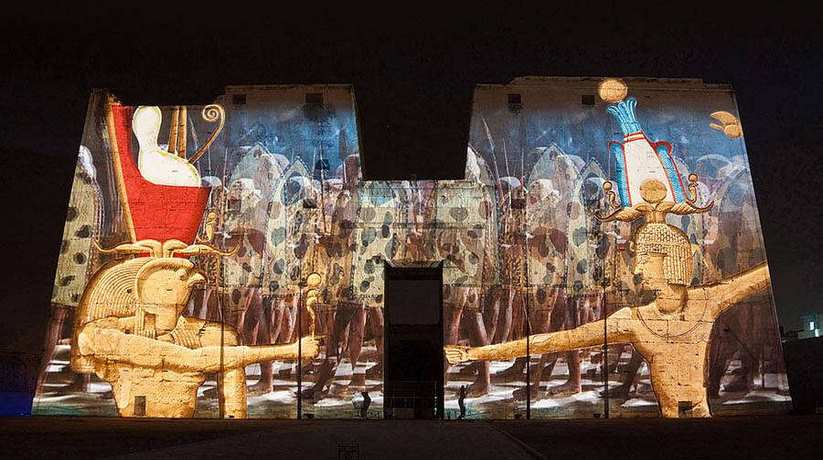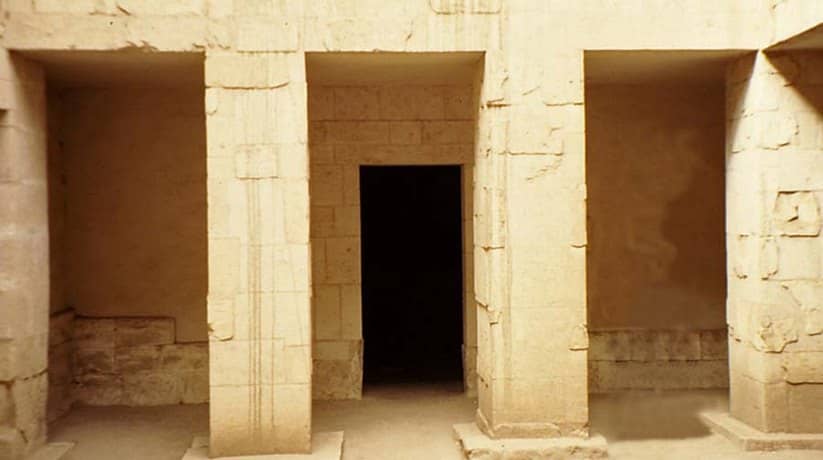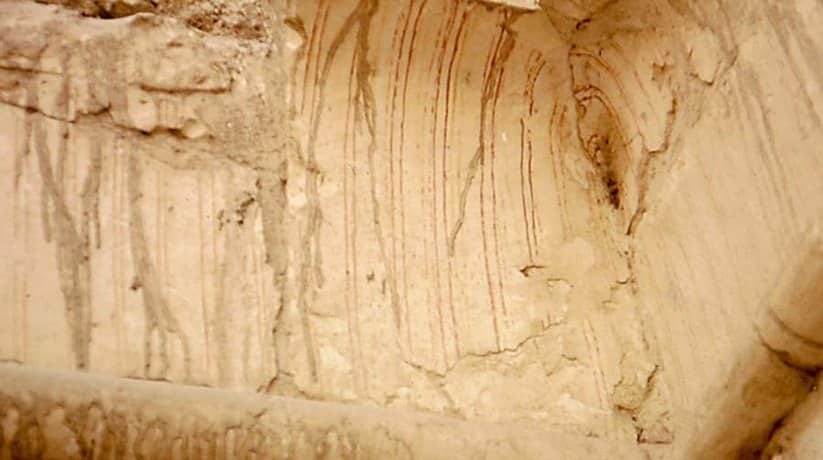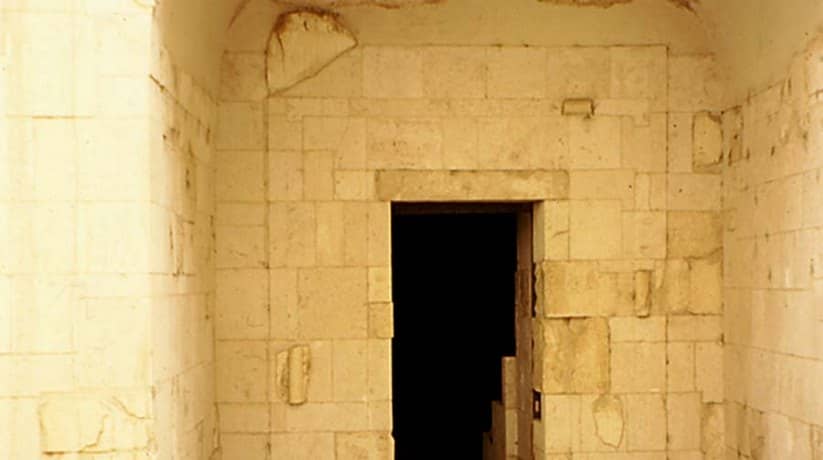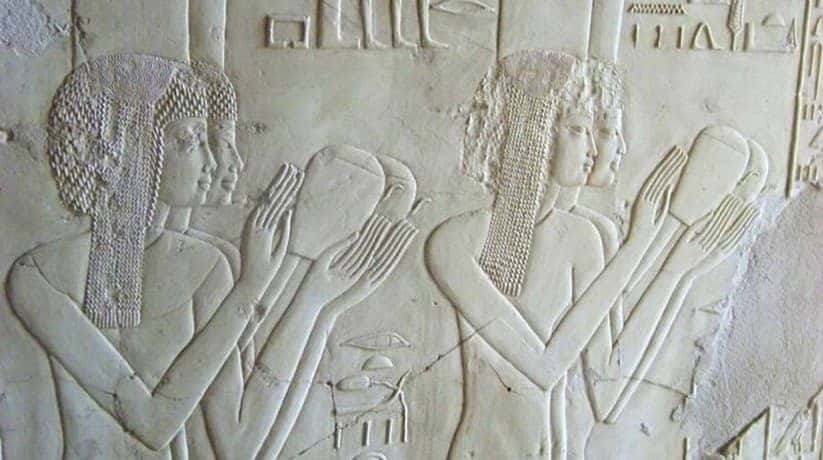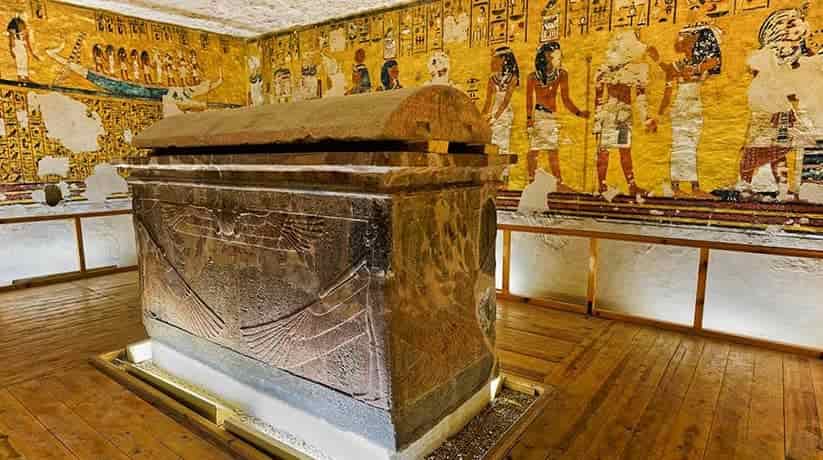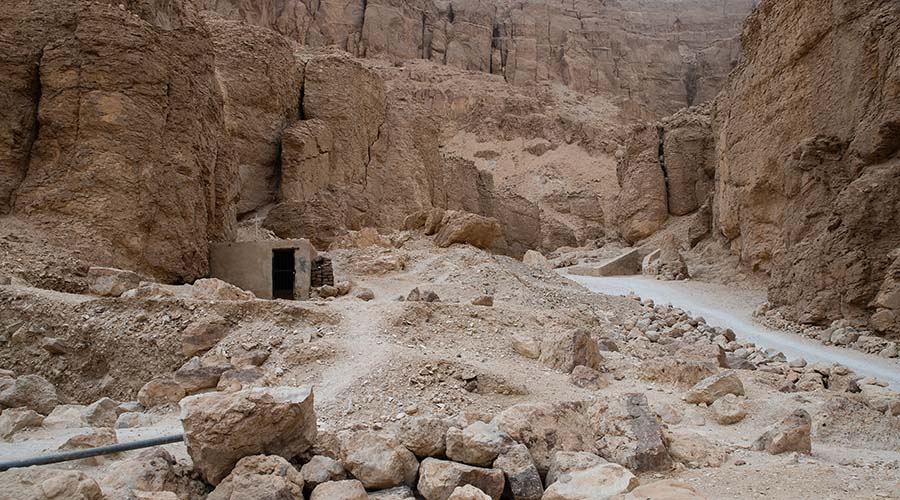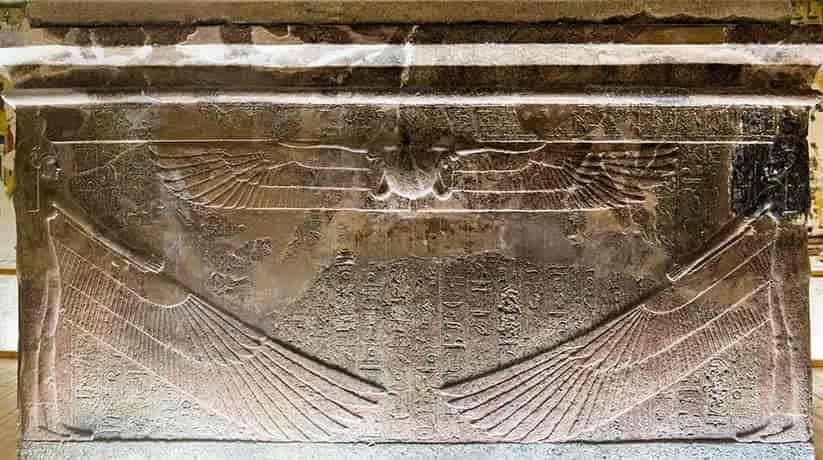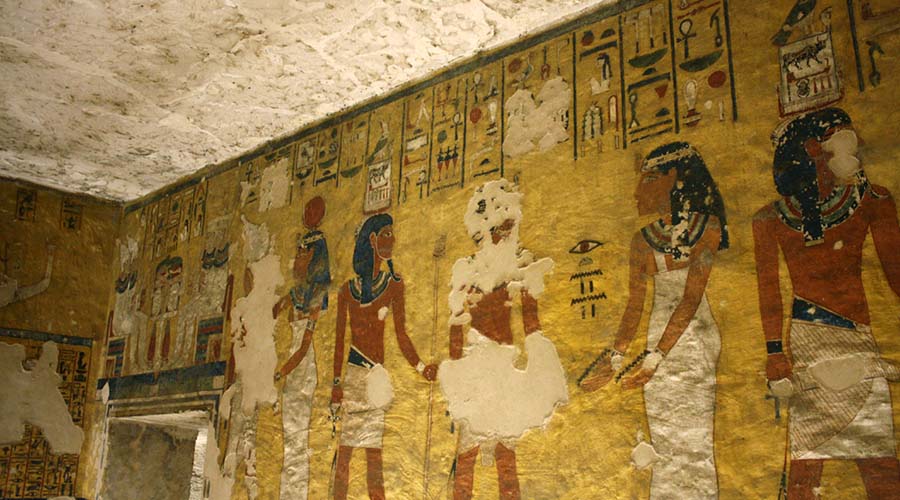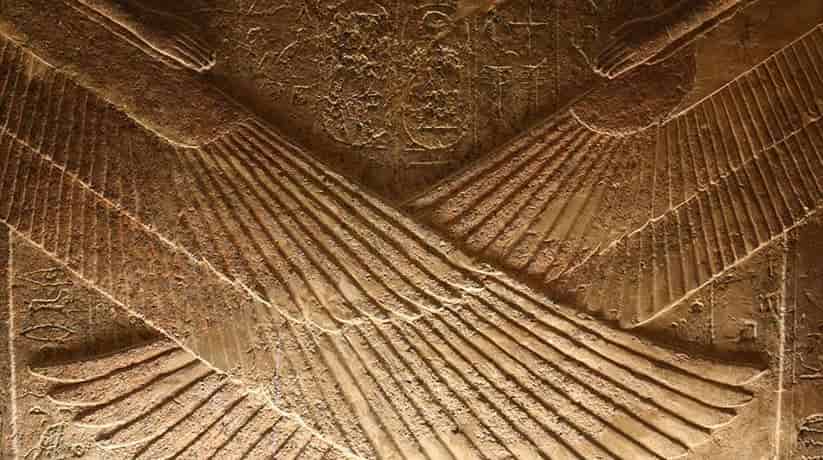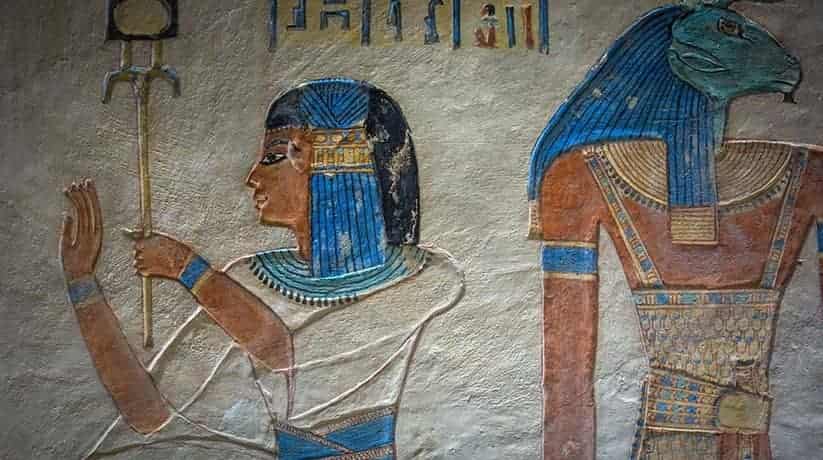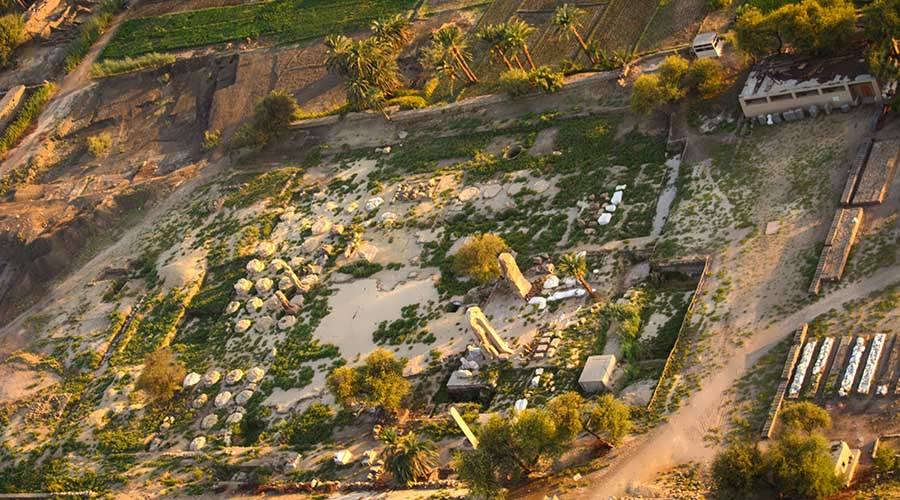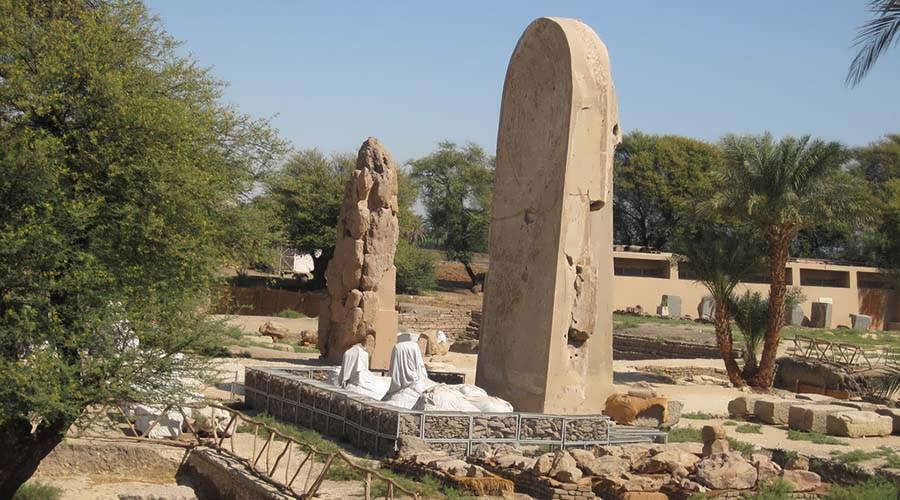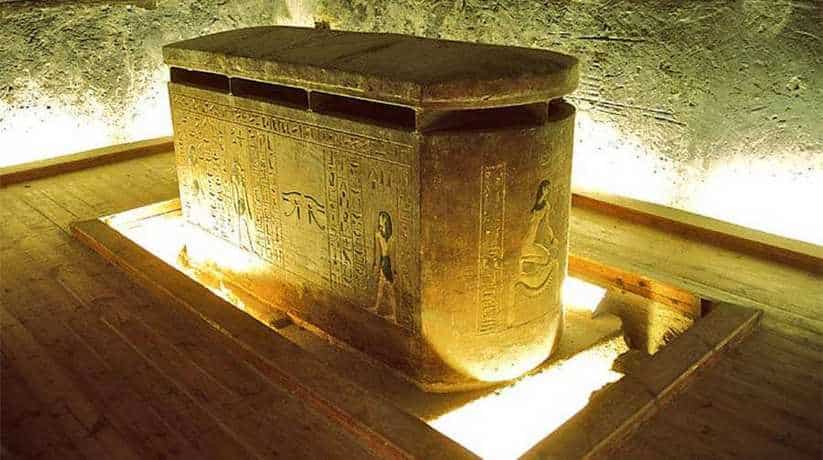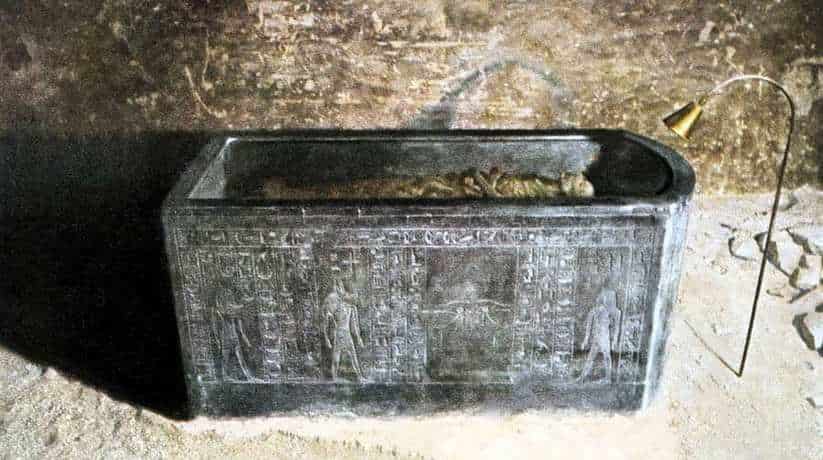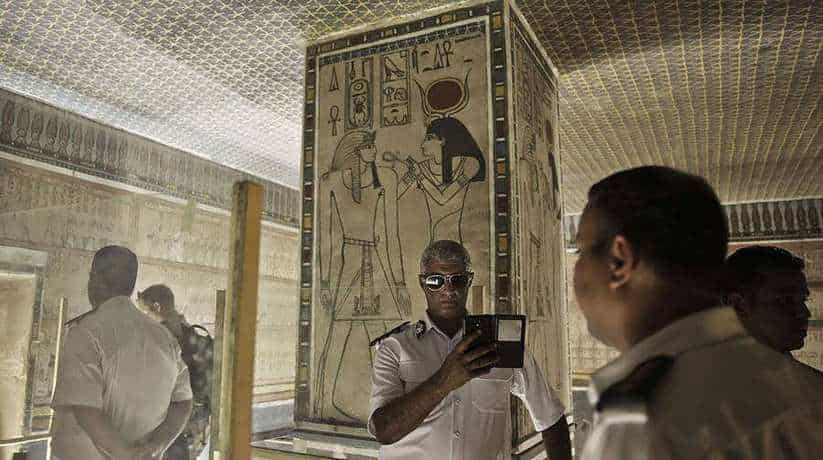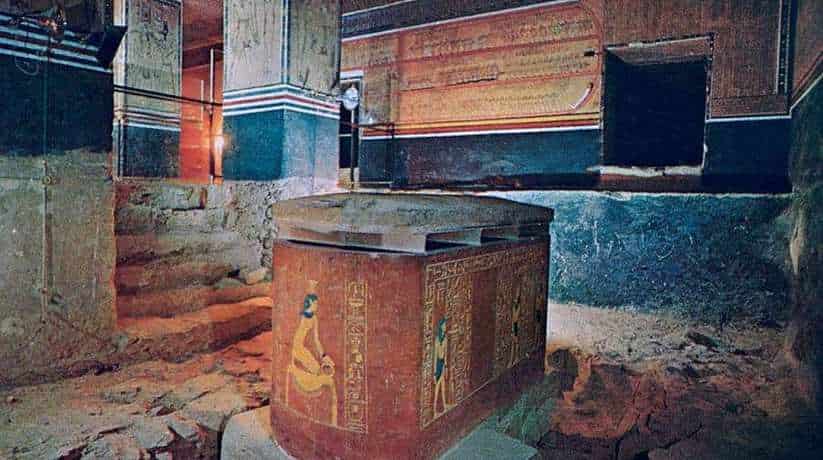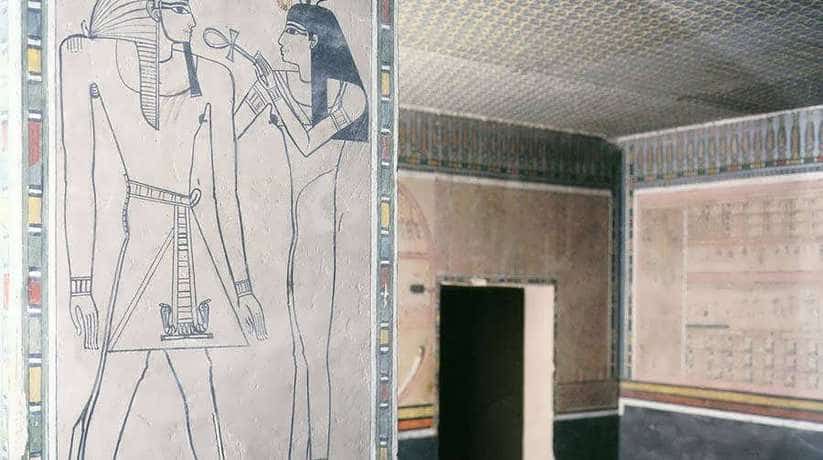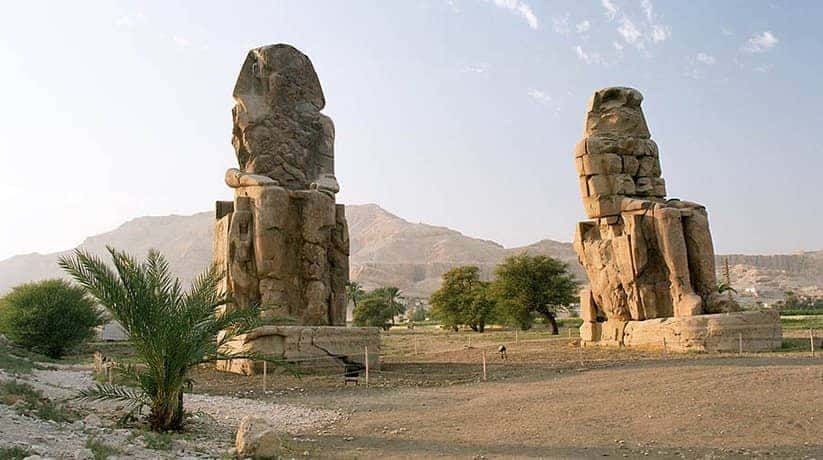Tutankhamun tomb Luxor KV 62 Egypt tours, prices, booking
Tutankhamun tomb Luxor KV 62 located at the Valley of Kings in Luxor. The tomb of Tutankhamun in Luxor number is KV 62. In fact, Tutankhamun was only the age of nine when he became king of Egypt. It was during the 18th dynasty of the New Kingdom 1332–1323 BC. Tutankhamun tomb Luxor discovered in 1922. It was by the archaeologist Howard Carter in the Valley of the Kings. His nearly intact tomb held a wealth of objects. Moreover, they give us unique insights into this period of ancient Egyptian history. Tutankhamun ruled after the Amarna age. It is when the pharaoh Akhenaten turned the religious attention of the kingdom. It was to the worship of the god Aten. Aten is the sun disc. Akhenaten was Tutankhamun’s probable father. He moved his capital city to the site of Akhetaten. It also known as Amarnain Middle Egypt.
In fact, the city is far from the previous pharaoh’s capital. After Akhenaton’s death, the pharaoh Smenkhkare ruled for a short time. And then, Tutankhamen shifted the focus of the country’s worship back to the god Amun. He returned the religious center back to Thebes. In fact, Tutankhamun married his half-sister, Ankhesenamun, but they did not produce an heir. Thus, this left the line of succession unclear. Moreover, Tutankhamun died at the young age of eighteen. He led many scholars to speculate on the manner of his death. Furthermore, His death was because of chariot accident, murder by blow to the head or even a hippopotamus attack!. The answer is still unclear. Tutankhamun’s much-older advisor Ay, married the widowed Ankhesenamun and became pharaoh.
Further details about Tutankhamun tomb Luxor KV 62:
In fact, Tutankhamun tomb Luxor itself is small. It is with architecture more in character with the private Tombs of the West Bank than a royal tomb. In fact, the decoration is in a sorry state. A staircase and also short descending corridor lead to a rectangular antechamber with a small annex off to the east. At 90 degrees to the antechamber is a sunken burial chamber. When discovered, it completely filled with the gilded shrines. Furthermore, it enclosed the sarcophagus of the king. This is the only chamber in the tomb which decorated. The style is like that of Tutankhamun’s successor Ay. Ay depicted on the walls in the ‘Opening of the Mouth Ceremony’. The east wall shows the king’s funerary procession. It is with the mummy which transported on a sledge to the necropolis.
Moreover, it was in the company of two viziers and a figure which some have identified as General Horemheb. This is indeed an unusual scene in a royal tomb, although common in private Tombs of the period. The north wall shows Ay, already wearing the royal crown, performing the rituals before the young king’s mummy. Ay here establishing his rights to the throne. It not usually done until the burial of the former pharaoh. Furthermore,it gives rise to much speculation on the history of the period. Before this scene the king shown greeted by the goddess Nut and with his Ka, embracing Osiris. The south wall depicts Tutankhamun followed by Anubis, Isis (destroyed) and before Hathor, ‘Mistress of the West’. Moreover, a vignette from the Amduat shows the apes of the “First Hour”. It depicted on the west wall of the burial chamber.
More details about Tutankhamun tomb Luxor KV 62:
Amduat is “Book of What is in the Underworld”. Unfortunately the painted decoration is in a poor state of preservation. In fact, it gets worse each year. The paintings in the tomb executed, with the decoration of the north, west and east walls in Amarna proportions. It is while the south wall seems to be more traditional. All the walls depict colored figures against a yellow background. There are four niches for magical bricks in the walls. In fact, Carter’s discovery of Tutankhamun tomb Luxor was sensational at the time. In fact, it was the first time to find a royal tomb which still contains an intact burial. Moreover, the tomb robbed several times in antiquity. It is although a vast hoard of the funerary treasures remained in the tomb.
It was obvious that they “restored to order” by the necropolis officials. The robbers had never got as far as the king’s mummy and still in situ today. It displayed in the center of the burial chamber in a gilded wooden coffin. It is inside his sandstone sarcophagus. On the east side of the burial chamber is the entrance to a side chamber known as the Treasury. The contents of this room were like those in the “crypt” area of a larger royal tomb. Here Carter found the king’s canopic equipment. He also found two subsidiary burials thought to be Tutankhamun’s stillborn children. This room is now empty and cannot visited today.
The innermost coffin at Tutankhamun tomb Luxor KV 62:
Tutankhamun’s sarcophagus held not one but three coffins in which to hold the body of the king. In fact, the sarcophagus is a box-like stone container. The outer two coffins crafted in wood and covered in gold along with many semiprecious stones. It is such as lapis lazuli and turquoise. The inner coffin made of solid gold. In fact, it was not the shiny golden image we see in the Egyptian museum today. It was when Howard Carter first came upon this coffin. It covered with a thick black pitch like layer which extended from the hands down to the ankles. This was an anointing liquid which had poured over the coffin. It was during the burial ceremony and in great quantity (some two buckets full).
The image of the pharaoh is that of a god. The gods thought to have skin of gold, bones of silver, and hair of lapis lazuli. So the king shown here in his divine form in the afterlife. He holds the crook and flail, symbols of the king’s right to rule. The goddesses Nekhbet (vulture) and Wadjet (cobra), inlaid with semiprecious stones. They stretch their wings across his torso. Beneath these goddesses are two more—Isis and Nephthys— which etched into the gold lid.
The death mask at Tutankhamun tomb Luxor Kv 62:
In fact, the death mask is indeed one of the masterpieces of Egyptian art. It rested on the shoulders of the mummy inside the innermost gold coffin. Moreover, the mask constructed of two sheets of gold that hammered together and. It weighs 22.5 pounds (10.23 kg). Tutankhamen depicted wearing the striped nemes headdress with the goddesses Nekhbet and Wadjet. They depicted again protecting his brow. He also wears a false beard. The false beard further connects him to the image of a god as with the inner coffin. He wears a broad collar, which ends in terminals shaped as falcon heads. The back of the mask covered with Spell 151 b from the Book of the Dead. It is which the Egyptians used as a road map for the afterlife. This particular spell protects the various limbs of Tutankhamun. It is as he moves into the underworld.
Entrance to Tutankhamun tomb Luxor KV 62:
There is a little train – Taftaf – that runs from the coach park to the monument area. It costs 5 Egyptian pound. Tickets for the King’s Valley cost 20 Egyptian pound for three tombs. It bought at the gate but separate tickets must bought for the tomb which costs 160 Egyptian pound. Photography inside the tombs strictly forbidden and can incur heavy fines. Many visitors find the tomb cramped and disappointing. Now, the entrance restricted to only a few visitors at a time. At busy periods there may be a queue.
Nearby attractions Information, tours and Online Booking
More of Egypt attractions

